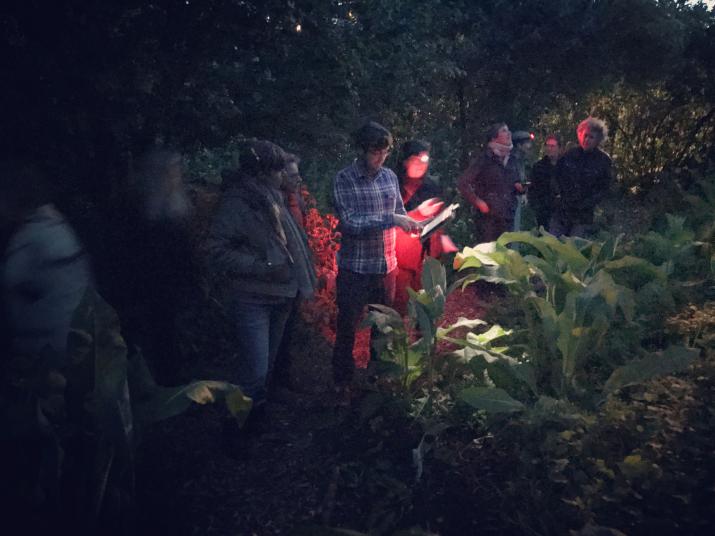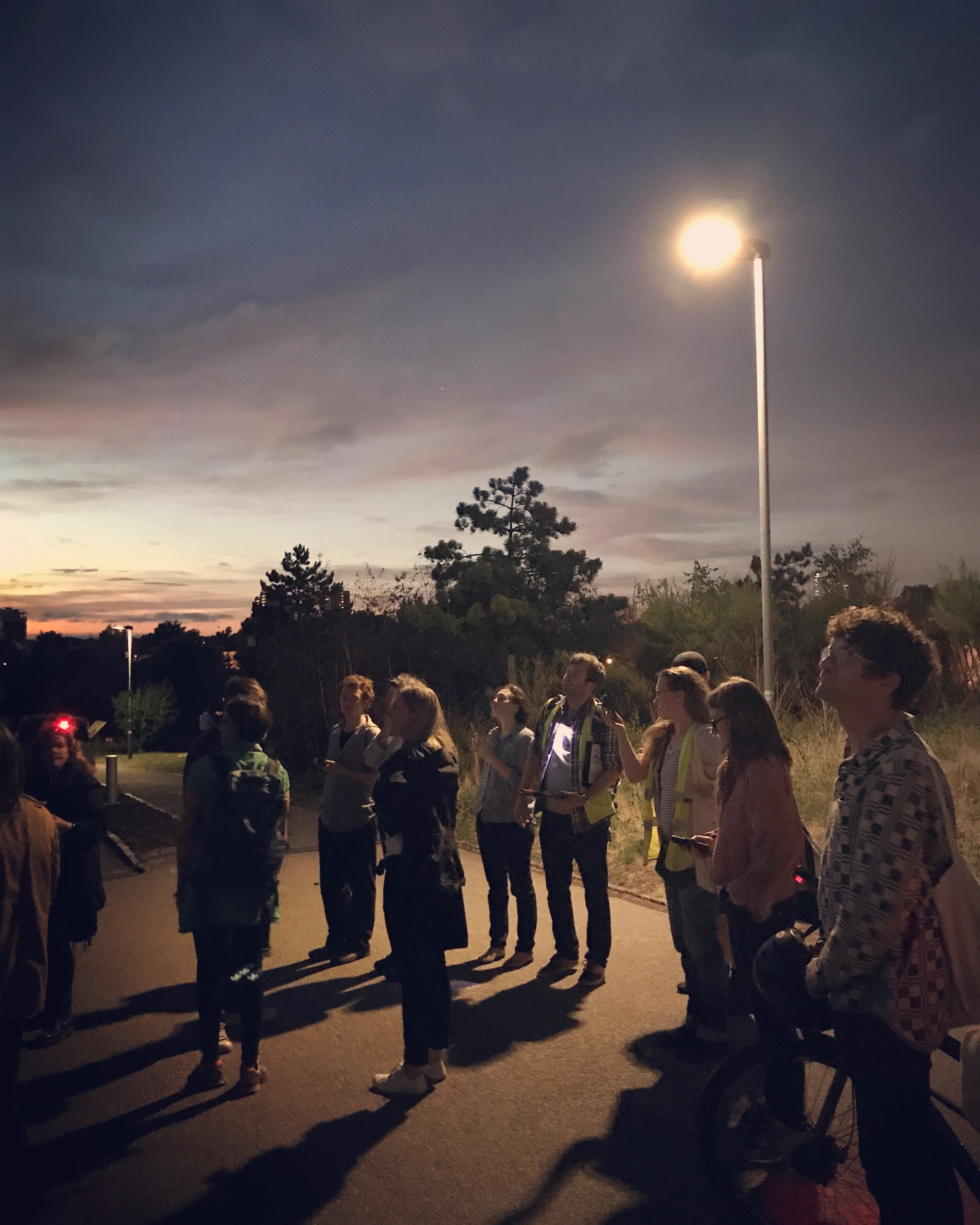
It can be difficult for many people living and working within cities like London to be fully aware of the biodiversity that surrounds them. This does not necessarily represent a lack of appreciation of wildlife and nature but is often the result of too little time to slow down, stop, listen and experience the ecology of their city. It also reflects the fact that wildlife has a tendency to concentrate in areas of better quality habitat. We therefore often have to actively seek out interactions and experiences with nature but what is encouraging is that these areas of more rich and abundant ecology can sometimes be just around the corner.
Phytology & Bethnal Green Nature Reserve: A hub for bats and the community
Bethnal Green Nature Reserve on Middleton Street is one of those special places. Behind the perimeter fence lies a mosaic of urban woodland, ponds and meadows and nestled amongst these, an ever evolving collection of art installations and spaces that explore the use, value, resilience and function of wildness within urban ecosystems. And it works. It works as a space in which to step out of busy high street life, into one where you can genuinely reconnect with the natural systems that run alongside those that we have manufactured. It works as a platform for collaboration, for creativity, for discussion and for playing. And it works for wildlife. A short walk through the site shows all of these elements interacting comfortably together as opposed to simply being forced to sit next to each other. It is a functional and inspiring landscape; a wonderful example of urban ecology in action.
Managed with great care and foresight by local residents and Phytology, an artist and community led project based at the reserve, the site is becoming a haven for a rich biodiversity. The team have considered the elements that drive healthy and diverse ecosystems and have sought to build and enhance the habitat resource through specific projects. A series of ponds that surround a stunning medicinal meadow support a rich community of invertebrates, amphibians and birds many of which nest in the native woodland that dominates the site. And alongside these are the bats. This year, the reserve is implementing a programme to further enhance the value of the site to urban bat populations and provide people with the chance to experience these nocturnal creatures through a series of events and workshops. Recognising the increasing squeeze on the number and quality of roosting opportunities for bats, an ambitious programme of bat box building and installation is underway including some more novel designs and approaches for artificial roost spaces. Planting of native night flowering and bat friendly plant species in key areas will further enhance the site for foraging bats. By the end of 2017 it is hoped that all the elements will be in place within the reserve so that it can become a bit of a bat hotspot, over time supporting increasing populations of bats.
Enhancing the urban landscape for bats
However bats like a lot of our urban wildlife are mobile, and seek to feed and disperse out over an area as opposed to a single site. The ambition of a second phase of the Phytology bat project therefore is to build a functional network of foraging and roosting opportunities extending out from Bethnal Green Nature Reserve. Linking up these sites along key bat commuting routes will hopefully help to support a larger and more resilient bat population. If there are a range of good feeding sites and suitable roost spaces all linked throughout an urban landscape then this may help to mitigate any impact to bats were any one of these features to be removed or disturbed. The reserve will serve as an important hub, out from which other wildlife can disperse if the right stepping stones are put in place. Many bat species have adapted well to living in urban environments such as the common pipistrelle (Pipistrellus pipistrellus) but careful planning is needed that properly considers the preferences and requirements of bats. The provision of suitable patches of habitat can allow them to thrive especially where a number of larger important wildlife sites and greenspaces are linked. Bethnal Green Nature Reserve is in relatively close proximity to Regents Canal, Mile End Park and Victoria Park, all areas known to support bat populations. A particularly special site is Tower Hamlets Cemetery Park, a beautiful urban woodland with quiet glades and veteran trees carefully managed to support a whole host of wildlife including bats. A recent bat walk sought to demonstrate how the park could potentially be connected to Bethnal Green Nature Reserve via important habitats that bats use to navigate and commute along such as canals and tree lines. It also highlighted the pressures faced by urban bats from artificial street lighting, noise and disruption of flight lines to some lesser known threats such as cats.

Phase 2 of the Bat Sanctuary project that considers bats within the surrounding neighbourhood will also seek to connect more people to the reserve from a wider area and provide further opportunities for people to get involved in their conservation. There will be a need to create and maintain good foraging habitat and build and install bat boxes. There will also be exciting opportunities to monitor how bats are currently using the wider urban landscape and how activity changes as a result of the improvements to the habitat. This data and evidence will further help to demonstrate the importance of Bethnal Green Nature Reserve as a habitat for bats and serve as a clear reminder of the role we play within urban landscapes and urban ecology. It is possible to experience an abundant and rich ecology within cities and sometimes all it takes is a walk around a different corner to find a place like Phytology.
About the Author:
I am lucky enough to work with Phytology as the resident ecologist helping to lead the bat sanctuary project. I have worked with bats for nearly ten years and continue to be amazed and puzzled by their behaviour and ecology. The project has provided me a wonderful opportunity to celebrate bats in east London and engage with a whole host of lovely people about the importance of bats and their conservation in cities. Working with some inspiring people including artists, gardeners and local residents to enhance the habitat resource in Bethnal Green, I am excited about the ambitions and continued success of the project and the reserve.
More Information: